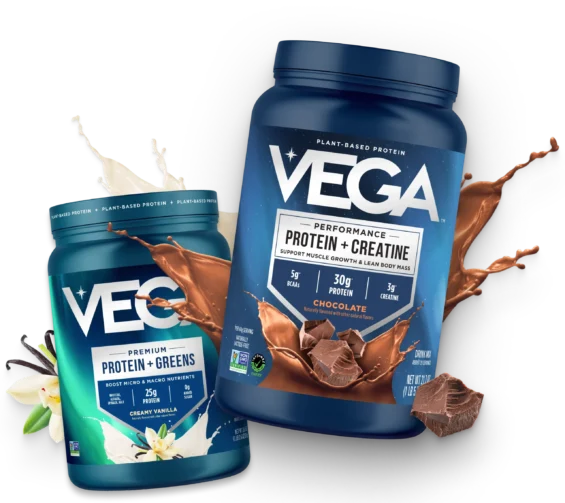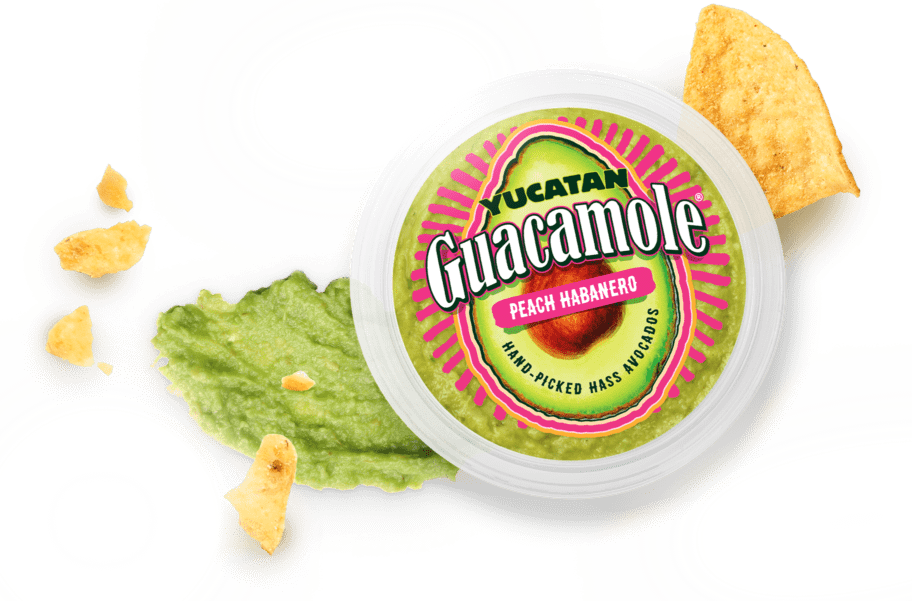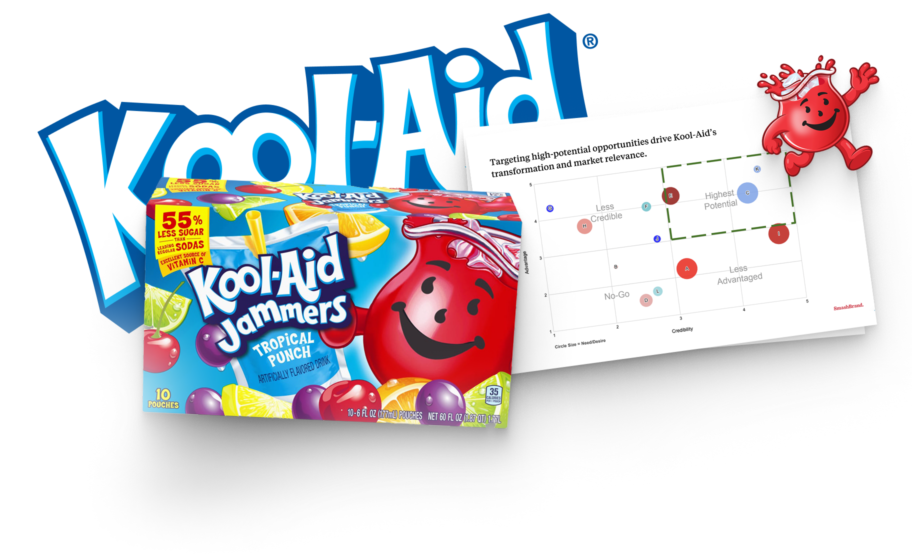So you’ve launched something new and it checked every box: product innovation, great design, compelling benefits. But in-market? Crickets. And the reason? Because it failed to communicate what made it different and why it mattered clearly. That doesn’t mean there is a problem with your product, but an issue with innovation positioning.
Here’s the truth: innovation doesn’t sell itself. People don’t buy what’s new; they buy what makes sense and what’s necessary. Whether it’s process innovation, brand positioning, or launching a new category altogether, success comes down to how it’s positioned. If your audience doesn’t get it fast, they don’t get it at all.
In this article, you’ll learn how innovation positioning transforms ideas into shelf-ready winners. We’ll unpack the strategy, structure, and storytelling behind building a brand positioning strategy that enhances the product innovation efforts and that creates real competitive advantage and real results.
What innovation means today.
Innovation in CPG is all about making strategic decisions that solve real-world problems and unlock growth. Innovation must create new value, shift consumer behavior, and drive brand growth. That means connecting product development to a clear positioning strategy so your idea doesn’t just exist, it thrives.
True innovation can reshape a category (paradigm innovation) or elevate existing solutions into something more innovative, faster, or more relevant to your target market. Whether it’s a breakthrough formula or a redesigned pack, success hinges on how you craft the product positioning and communicate a believable brand promise.
And it’s never static. Innovation is a cycle guided by market research, refined through strategic decisions, and validated by each brand positioning statement that earns attention from your most potential customers and edges out competitors.
Innovation without positioning is just a risk.
Launching a new product without a clear brand position is like throwing a dart blindfolded. No matter how innovative your idea is, if your target customer doesn’t immediately understand what makes it valuable or who it’s for, it will miss the mark.
Genuine innovations deliver more than novelty; they solve a problem, enhance the customer experience, or create an advantage worth choosing. That’s the essence of being “different for a reason.” It’s not enough to be new; you need to be necessary. And nowhere is that necessity tested faster than on the shelf.
Your packaging must express your brand identity, communicate the brand positioning statement, and deliver on your marketing strategy in under three seconds. It’s where business strategy meets execution and where brands either gain a competitive edge or lose the moment.
Building an effective innovation positioning strategy.
A CPG product innovation becomes effective when a clear, actionable plan supports it. The goal of an effective strategy is to describe the new product and position it within the context of real-world usage, buyer behavior, and shifting market trends. It accounts for how people discover, evaluate, and adopt new solutions.
This kind of product positioning strategy blends insight with execution. It considers your competitive landscape, informs your marketing, and aligns with the expectations of your target advertising, retail partners, and internal teams. Impactful innovation is a system built for adoption and scale.
Let’s break down the essential components that turn a brilliant idea into a category mover:
Holistic brand experience.
Successful innovations don’t win on features alone; they win on relevance. Positioning must speak to how the product improves life, not just how it works. This means integrating functional benefits with emotional value and reflecting that across every customer interaction.
Whether it’s packaging design, claims, or usage cues, the goal is to create a unified story that resonates instantly. When functionality is paired with meaning, your brand becomes more than a choice; it becomes the obvious one. That’s how you achieve operational excellence at the point of sale.
Future-forward aesthetics and storytelling.
In CPG, shelf presence is split-second warfare. Your innovation might be category-defining, but if it says nothing new, your potential customer walks right past it. That’s where future-forward aesthetics and storytelling elevate your innovation strategy from interesting to irresistible.
Clean design, intuitive structure, and emotionally resonant themes signal that your brand is thinking ahead. Visually distinct storytelling also fuels targeted advertising and builds brand awareness across channels. It unifies digital and physical touchpoints into a single, unmistakable voice.
Over time, this consistency helps a product evolve from a new entrant to a market leader, powered by the compound effect of strong brand positioning and intentional design.
Compelling storytelling uses metaphor, design cues, and a confident tone to imply the benefit without needing a deep dive. Take the example of a wellness drink that frames hydration as performance optimization, not health maintenance. It shifts perception by reframing the context.
Simplifying the science into consumer-facing benefits.
Every innovation starts with a breakthrough. But if that breakthrough lives in technical jargon or behind-the-scenes process, it never makes it to the shelf or the cart. A high-impact brand positioning strategy makes helpful science in a real-world, here’s-how-it-helps-you way.
Strategic brands take dense product truths and convert them into clear, confident purchase drivers. No one needs to know the chemistry, but they need to know what it does for them and why it’s better.
This is where brand strategy and innovation connect. The packaging becomes the translator, the claims persuade, and when it’s working, that message is heard and remembered. As brand innovation trends accelerate, the brands that lead are the ones that speak confidently and with purpose.
When done right, this approach becomes the connective tissue between your brand strategy and innovation, creating relevance at the shelf and resonance in-market.
Educating early adopters to fuel traction and credibility.
The first buyers of your innovation are more than customers, they’re validators. Early adopters are curious, quick to try, and even faster to judge. Earning their trust means educating them without over-explaining.
You’re not convincing skeptics; you’re equipping advocates. The goal isn’t a crash course in product mechanics; it’s clarity on value, proof of performance, and a reason to believe. Do that well, and you don’t just spark adoption. You spark momentum.
Archetypal alignment to guide brand narrative.
Great brands aren’t built on features; they’re built on stories. Aligning your brand narrative with a strong archetype like the Creator, who creates new possibilities, or the Magician, who delivers transformation, gives your innovation voice, vision, and emotional consistency. Archetypes aren’t decoration. They shape tone, claims, packaging, and innovation priorities. They become shorthand for how your brand shows up and why it matters.
Planning or evolution with scalable frameworks.
Innovation is never one and done. Building a future-ready brand means creating a positioning system that scales across SKUs, categories, and time. Whether it’s versioning (“Innovation X2”), modular messaging, or adaptable design systems, the most brilliant innovations leave room for what’s next. Scalability signals to the market that you’re not here to compete today. You’re here to lead tomorrow.
Real-world moves that make innovation positioning stick.
Positioning is an executional playbook. For CPG product innovation to resonate, it needs more than a good idea and great design. It needs to be instantly understood, emotionally relevant, and unmistakably different. Take Crocodile Cloth, for example. The name, the rugged design, and the bold structural cues communicated toughness and utility before anyone even read the label. That’s what clever branding and innovation look like: intuitive differentiation built into the pack.
Earth Breeze went beyond “eco-friendly” and redefined the space with messaging like “powerful clean with no harsh chemical residue.” Their packaging immediately suggested less waste and more efficiency. It’s a sharp brand development example of storytelling through structure.
Then there’s Tubshroom, a simple utility product elevated through metaphor and positioning. By using the “shroom” analogy, they made a mundane function, drain clog prevention, feel both novel and easy to understand. Its success shows how even the most functional retail brand development can benefit from creative narrative thinking.
But none of these brands guessed their way to clarity. They tested their way there. Using contextual testing, these teams identified the right “way in” from messaging hierarchy to pack shape to shelf visibility. It’s this empirical backbone that turns a brand innovation strategy into market success. Because in innovation, instinct gets you started. But data gets you to scale.
Operationalizing innovation positioning with confidence.
Your innovation positioning won’t become a growth engine until it’s pressure-tested, refined, and aligned across every part of the launch. Turning a creative hunch into a sales lever takes a proven process that builds certainty into every phase of your innovation. Here’s how we make that happen:
Consumer segmentation.
Innovation means nothing if it’s speaking to the wrong people. Effective segmentation identifies the highest-value audiences based on behavior, mindset, and unmet needs, not just demographics. This focus ensures your positioning speaks directly to the consumers who will drive early adoption and long-term loyalty.
Usage and attitudes mapping.
You can’t position around assumptions. Mapping how real consumers use products, what they believe about the category, and what frustrates them reveals the emotional and functional levers your brand can own. This insight becomes the strategic fuel behind messaging that moves people.
Competitive audits and retail analysis.
To stand out, you need to see what’s already filling the shelf and what’s missing. We dig into design, claims, packaging architecture, and in-store realities to find white space opportunities. It’s about carving a brand space no one else owns and making it yours.
Value proposition and messaging testing.
This is where creative ideas get real. We test language, benefit framing, and purchase drivers with actual shoppers to find what clicks. The result? Messaging that’s not just clever, it’s proven to perform.
Brand foundations that anchor design and rollout.
Positioning doesn’t end with words. It must inform how your brand looks, behaves, and expands. From tone to typography, we build foundational elements that carry your positioning into every expression from packaging to retail to DTC.
Additional considerations for innovation success.
Even the strongest innovation positioning can falter without a few key strategic foundations in place. Beyond the consumer-facing message, success is shaped by internal alignment, market timing, and executional discipline. These are the often-overlooked levers that turn potential into performance:
Organizational readiness.
Innovation positioning is a team sport. It only works when everyone from marketing and R&D to sales and supply chain is aligned on what success looks like. Shared KPIs, clear decision-making criteria, and leadership buy-in create the structure for consistency and momentum when the internal team understands the “why,” the execution stays sharp.
Timing and market context.
Being first doesn’t always win, but being right on time does. Launching into a market that’s not yet ready or one that’s already saturated can kill an otherwise solid idea. Innovative brands ground their innovation in trend data, consumer readiness, and seasonal patterns to ensure their entry is well-timed and well-received.
Pricing strategy and value communication.
A well-positioned product doesn’t compete on price; it competes on value. Strategic positioning justifies premium pricing by making the benefit obvious and credible. When the proposition is clear, pricing becomes a signal of quality, not a barrier.
Channel-specific customization.
One message doesn’t fit every shelf. Whether you’re in retail, eComm, club, or DTC, your positioning needs to flex to meet channel-specific dynamics. The key is to adapt without drifting, maintaining a consistent core while optimizing execution for the environment and consumer mindset.
Preemptive differentiation against competitors.
If your innovation gains traction, expect copycats. Effective positioning anticipates this by carving out a space that’s not unique, but hard to replicate. This includes ownable language, distinctive packaging, and a layered value story that competitors can’t easily duplicate.

Nice Package
Don’t miss out on our monthly newsletter Nice Package!
Each month, we deliver a data-driven newsletter directly to your inbox, unpacking a critical topic in the FMCG & CPG industry.
"*" indicates required fields
What happens when you get innovation positioning right?
When innovation positioning is done right, the impact is immediate and compounding. You show up stronger on the shelf and brighter in the minds of consumers. Precise, targeted positioning leads to a shelf breakthrough. It drives increased purchase intent because shoppers understand what the product is, who it’s for, and why it’s worth choosing.
And over time, the positioning builds category leadership, turning your innovation into the benchmark others chase. Successful innovation and positioning set the foundation for long-term growth, enabling your brand to evolve, scale, and lead with confidence.
Subscribe to
Nice Package.
SmashBrand’s Nice Package: Stay current with our latest insights
Free Resource.

CPG product repositioning guide.
Explore the five undeniable signs your CPG product needs repositioning along with strategies for leveraging consumer insights for a guaranteed market lift.
Download Whitepaper About CPG product repositioning guide.


